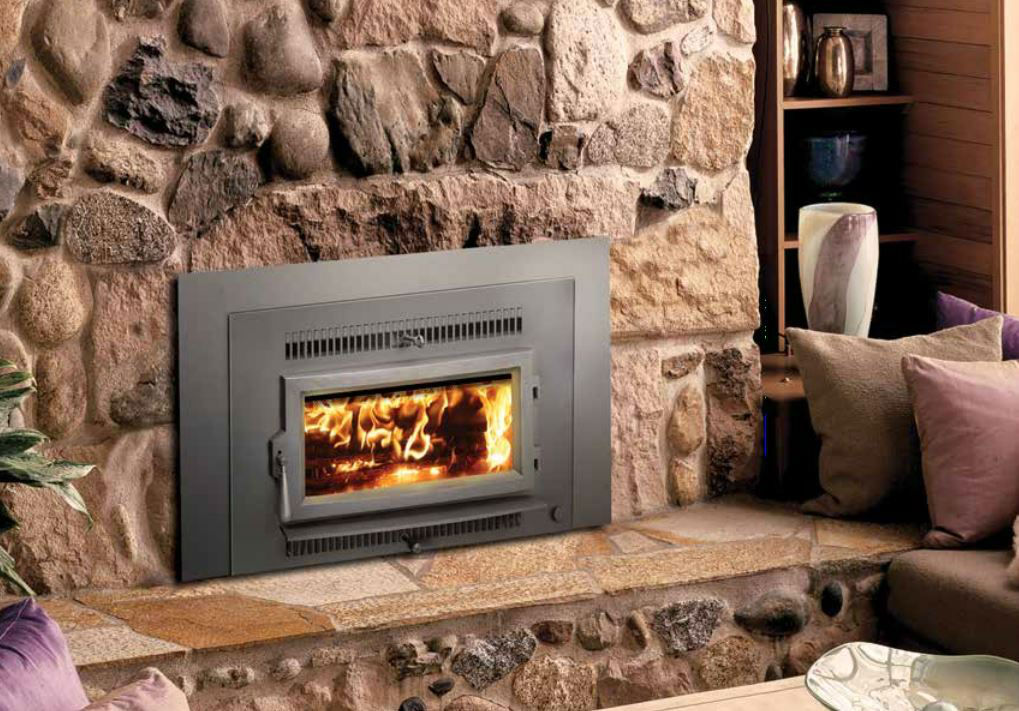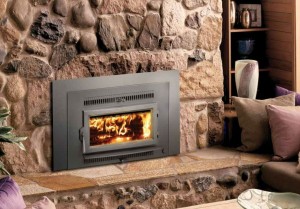Traditional masonry fireplaces offer stunning aesthetic appeal, with their grand brick hearths and wide open firebox that can house a lot of wood and large fires. The welcoming ambiance created by masonry fireplaces can be tough to beat, but they have one of the lowest heating efficiencies of all fireplaces on the market. If the goal is to utilize the heat of the fire to warm up the house, a masonry fireplace is not a great option. However, masonry fireplaces serve as excellent candidates for a type of replacement fireplace called an insert. Before running out and buying the first insert you see, though, it is vital that you do your homework.
The first step is to fully understand the insert options. A fireplace insert is a closed-combustion fireplace that is installed directly into an existing fireplace. Separating the firebox from the living space and utilizing a blower to pump hot air into the house instantly magnifies the efficiency of the fireplace. The inserts can use wood as fuel when utilizing a fully vented chimney system. Gas burning inserts are also an option, and they come in vented, direct vent, and vent-free systems.
If the goal is to increase the heat production of the fireplace, a wood burning insert is the better option. Burning wood produces much more heat than burning natural gas. On the other hand, gas inserts offer many more options for ventilation, which makes them an appealing option despite the reduced heat production. Like masonry fireplaces and wood burning inserts, gas inserts can have a traditional venting system, with a single vertical chimney. However, they also come with direct vent and vent-free systems. Direct vent offers improved efficiency and does not utilize the existing chimney. The double pipe system draws in outside air through one pipe and expels smoke out through the other, both of which vent outside just behind the fireplace. Vent-free systems have the highest efficiency and require no ventilation at all. These cannot be left on for long periods and may lower air quality though, so they should not be the only source of heating.
After determining the type of insert you want to replace your old fireplace with, you must obtain the proper measurements from your existing fireplace. Having these measurements makes it possible to choose the fireplace insert that is guaranteed to fit into your existing space. The first few measurements involve the firebox – the opening width and height, the back wall width and height, and the side wall width. Next, obtain the distance from the fireplace opening to the edge of the hearth, the bottom of the mantle, and to the left and right of the mantle. Finally, measure the lintel distance, which is the distance from the face of the fireplace to where the opening of the flue begins. Prior to shopping, also determine if you have an arch fireplace, the type of facing, whether it is masonry or prefabricated, and whether or not there is a flue liner. For assistance in measuring and purchasing your fireplace in the Waldorf, Maryland area, contact the Tri County Hearth and Patio Center to speak with one of the experts.

